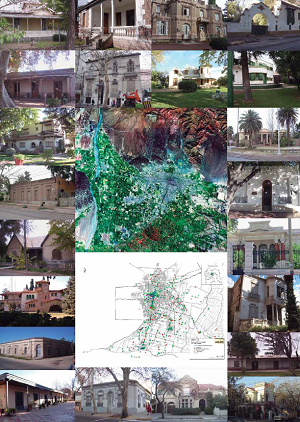Abstract
This article presents the analysis and assessment of a specific portion of the architectural production in Mendoza: houses with a great historical value within the metropolitan area of Mendoza, Argentina. As source material, we considered previous research studies, which have enabled us to understand the historical evolution and the different kinds of buildings around the region, as well as some primary information from a project on the architectural heritage of the metropolitan area of Mendoza, recently finished. The analysis and evaluation of the architectural features, possibilities and limits of this set of housing contributes proposing guidelines and in designing strategies which guide the conservation and valorization of this heritage. Regrettably, these architectural master pieces have been lost during the last decade, due to a depreciation of their cultural value and strong pressures from the real estate market. For these reasons, fewer and fewer buildings of this type are kept in place. Historical research has granted an interpretation framework of all the architectural assets which have been classified, allowing us to draw an explanatory diagram of the particular evolution of these constructions: the houses. If History enables us to reconstruct “what it was”, then patrimony enables us to analyze “what remains” at present, as a piecemeal testimony of the historical memory in relation to the different forms of living within a certain social and cultural development of a city and its location in the Northern oasis of Mendoza, in the Center-West of Argentina
Apuntes is registered under a Creative Commons Attribution 4.0 International Public License. Thus, this work may be reproduced, distributed, and publicly shared in digital format, as long as the names of the authors and Pontificia Universidad Javeriana are acknowledged. Others are allowed to quote, adapt, transform, auto-archive, republish, and create based on this material, for any purpose (even commercial ones), provided the authorship is duly acknowledged, a link to the original work is provided, and it is specified if changes have been made. Pontificia Universidad Javeriana does not hold the rights of published works and the authors are solely responsible for the contents of their works; they keep the moral, intellectual, privacy, and publicity rights.
Approving the intervention of the work (review, copy-editing, translation, layout) and the following outreach, are granted through an use license and not through an assignment of rights. This means the journal and Pontificia Universidad Javeriana cannot be held responsible for any ethical malpractice by the authors. As a consequence of the protection granted by the use license, the journal is not required to publish recantations or modify information already published, unless the errata stems from the editorial management process. Publishing contents in this journal does not generate royalties for contributors.


